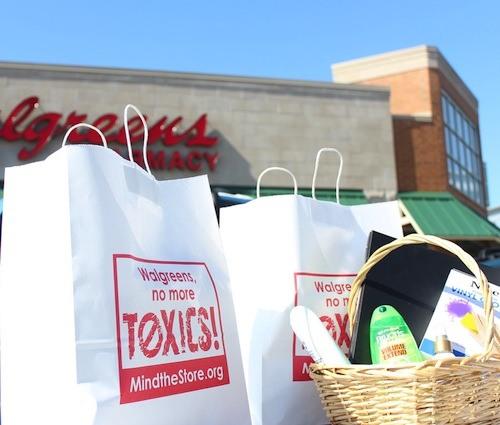
By Lindsay Dahl
Public awareness about toxic chemicals in consumer products and food has grown exponentially over the last decade. Major companies have taken action on removing individual toxic chemicals from their products, and food companies and fast-food chains like Panera Bread are moving away from questionable food additives. Consumers are clearly asking for more transparency and action on the things that go into their food and everyday products.
Consumer pressure warrants market and policy response
Public concern isn’t just a fad; it’s rooted in decades of scientific research showing links between chronic disease and toxic chemicals we often unknowingly come into contact with every day.
Consumer behavior is moving the market away from some toxic chemicals, albeit slowly. State and federal policy reforms have pushed the envelope and created an increased demand for a credible and meaningful regulatory framework on chemicals. And finally, the marketplace, most notably retailers, have started to create a more comprehensive and systematic shift away from these ingredients in their supply chains. These are all a reaction to our failed chemical policy in the United States.
The root of the problem lies in the flawed Toxic Substances Control Act of 1976 (TSCA), which hasn’t been updated since Gerald Ford was president. The Government Accountability Office has issued several reports showing the deep regulatory failure of TSCA. Everyone, including chemical manufacturers, agree TSCA needs to be reformed. A movement of individuals, health organizations, medical professionals and environmental organizations as seen in our robust coalition, Safer Chemicals, Healthy Families, have been pushing for meaningful reform of this failed and broken statute.
Enter new market campaigns
While progress on meaningful policy reform has been slower than we would like, last year we launched a new campaign called Mind the Store, which has the goal of working with leading retailers (10 in total) to remove and eliminate toxic chemicals from their supply chain. With our wealth of experts in the field, we pulled together the Hazardous 100+, a list of toxic chemicals identified by authoritative bodies that are of concern. This is a roadmap for where chemicals will be restricted at the state, federal and international level and creates a way for retailers to get ahead of the game.
Within the past year both Target and Walmart have come out with comprehensive policies on chemical ingredients, both of which take different approaches, and in some ways has been a game-changer. Both retailers have created lists of more than 1,000 chemicals of high concern, which includes our Hazardous 100+ list. Walmart, for example, is encouraging suppliers to reduce, restrict and eliminate these chemicals using informed substitution principles. They are also encouraging suppliers to disclose whether their products contain these chemicals on their websites, and starting January 2018 on the product label. For the first time, major retailers are showing a responsiveness to their customer base and tackling the problem at a much larger scale than simply responding to the “chemical of the week.”
Walgreens stays silent
Many other retailers are working on their own policies on how to address the use of chemicals in the supply chain. Unfortunately some retailers -- most notably Walgreens, despite being the largest pharmacy health chain in the country -- have been silent on this issue. After a year of friendly outreach to Walgreens, they have effectively blown us off. Even when concerned parents showed up at over 50 of their stores to return toxic products, they still haven’t responded.
What’s even more interesting about Walgreens is they recently bought 45 percent of Alliance Boots, a European drugstore chain that has a robust chemical policy. Walgreens has none. The merging of these two companies is expected to be complete in early 2015.
So as these two companies merge, doesn’t it make sense for them to align their sustainability practices and for Walgreens adopt Alliance Boots chemical policy? To give you an example, Boots has already phased out many of our Hazardous 100+ chemicals including: phthalates, PVC plastic, parabens and triclosan. If anything this shows us that a comprehensive chemical policy can not only be created but also successfully executed. If they’re doing it in Europe, they can do it here in the United States.
Thankfully, the radio silence from Walgreens is rare. Many of the leading retailers are working with us on how they can best address chemicals in their supply chain, knowing that tailored approaches are needed to meet each of their unique needs.
This problem won’t go away, public health campaigns like ours will only increase in size and breadth. Meanwhile the science around some chemical ingredients only creates more urgency for us to address the problem in a comprehensive manner.
Once people learn about this issue it’s hard to “unlearn”. And so the question remains: which retailers have the guts to respond to this concern in earnest with a sophisticated and robust chemical action plan?
Over the next few months, I am hopeful we’ll find out.
Lindsay Dahl is the Deputy Director of Safer Chemicals, Healthy Families where she directs the coalition grassroots and online organizing efforts. In her free time, Lindsay writes on a variety of topics on her blog at www.lindsaydahl.com.
TriplePundit has published articles from over 1000 contributors. If you'd like to be a guest author, please get in touch!














